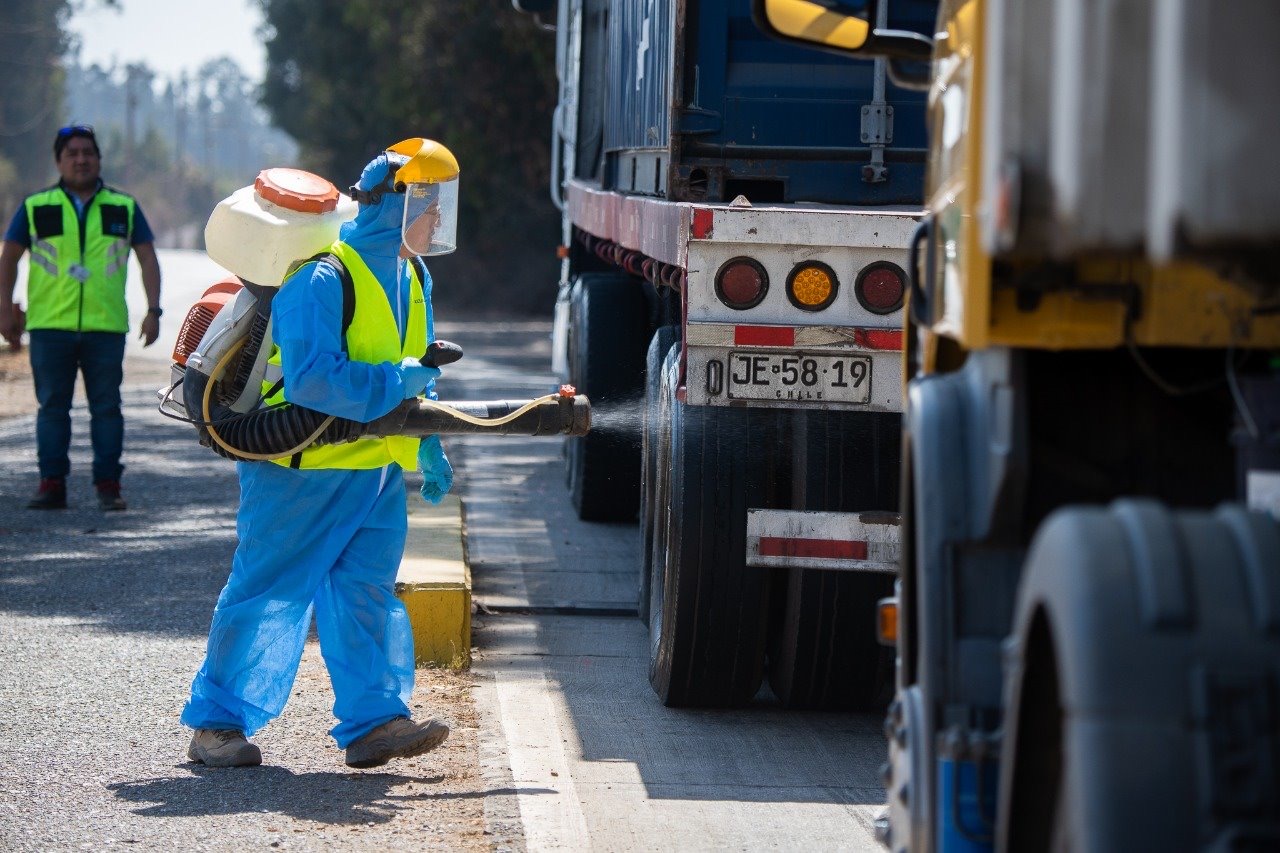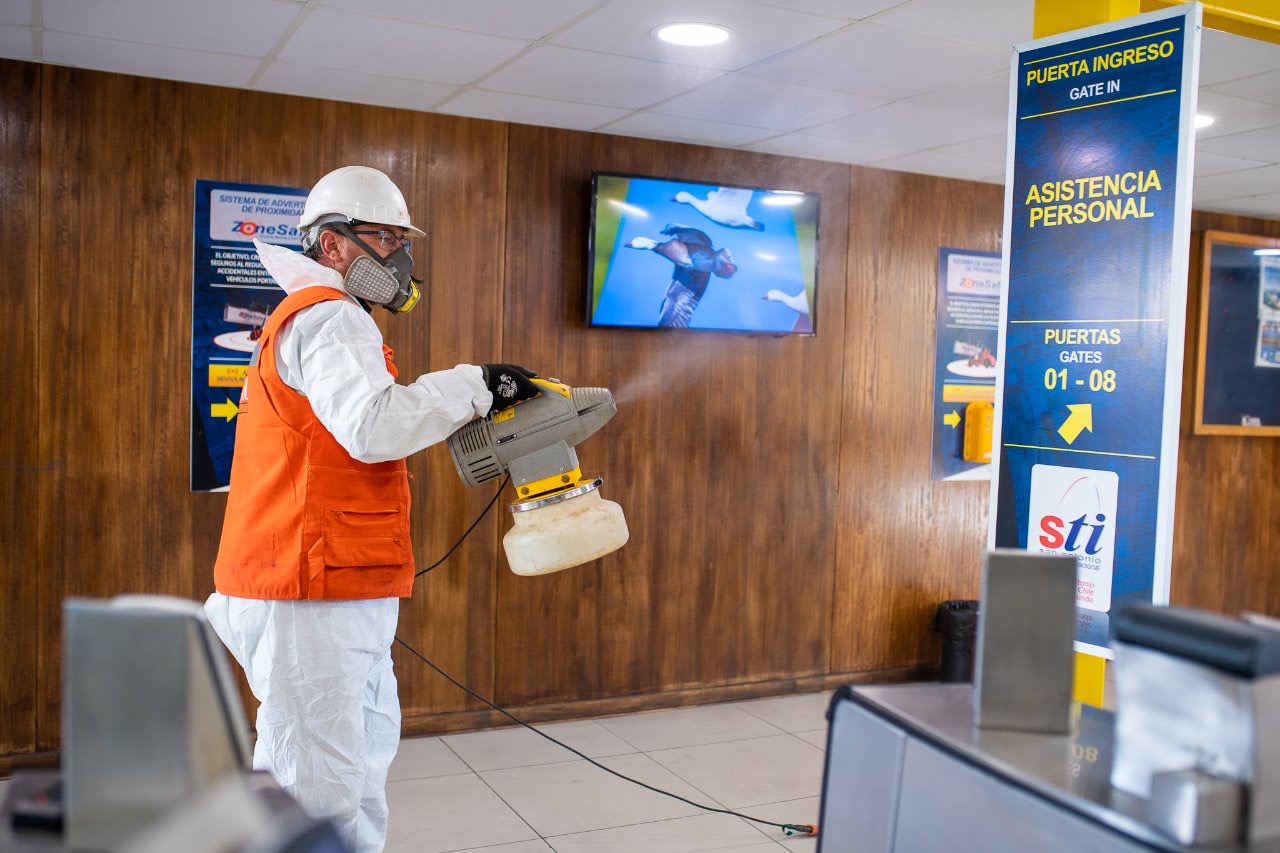In recent months, the region’s ports have undergone dramatic changes in the way of doing their operations. The crisis of the COVID has caused big impact in business, commerce and operations. The region’s ports have applied diverse restrictive protection measurements of labors and operations as a way of fitting their activity to the containment of the COVID-19 extension. Non-essential operations have been limited and, in most ports, several measurements have been taken for cruise ships, some of which have been denied permission to berth in port and left at bay. The short-term impact of this crisis is a hard blow to activity not only in ports but in the whole logistic chain associated with foreign trade. Ports play a critical role in assuring essential supplies such as life-saving food and provisions, requiring fully operational ports to do so. This article explores the impacts, adopted measures and reflections on the challenges of the ports of the region from based on this new context of crisis.
Impacts on ports
Due to the crisis, several ports of the region register important falls in containers handling volumes, principally in the month of March. In Chile, in its central region a fall of 16 %, in Callao, Peru, a fall of 6 %, in Buenaventura, Colombia a reduction of 11 %, in Mexico (Caribbean Sea) a fall of less 5 % (Sanchez and Barleta, 2020). In February, the shipping lines canceled approximately 100 trips on routes from Asia to North America and Europe. Many containers were stranded in ports, but they have finally been transported to their destination. Despite the relative normality in ports, the demand and supply of containers remain very unbalanced, with increases in stock and saturation of storage areas. Many containers are staying in the “extra-port terminal” or inland depot, because some importers have postponed the payment of duties and the stocks are paralyzed due to lack of sales.
In Latin America, an initial review of the pandemic’s impacts and new shipping and operations procedures indicates an additional delay of 2.5 to 4 days in the arrival of import containers at their destination (Sanchez and Barleta, 2020). According to operators, the negative effects so far have been severe, and in some cases, they are aggravated by logistics bottlenecks, lack of the capacity and the absence of availability of empty containers and the need for new institutional plans for the crisis management. A total of 20 blank sailing was registered on the west coast of South America and 4 on the east coast of South America, approximately 50 % of cancellations. One of the big problems of the ports is the immobilized containers.
The accumulation of merchandise in the terminals is the first global effect of the crisis in ports. In the first global report that 36 % of a total of 67 surveyed ports recognize an increase in the use of the storage facilities and some ports already report a shortage of capacity (IAPH-WPSP, 2020). As of April 23, most of the Ports of Latin America operate regularly, but some with certain restrictions. There have been some delays and changes in ships schedules, ships sizes and shipments. In Panama the cargo handling has been supported in the five most important ports of the country. Nevertheless, a decrease in cargo was reported in some terminals due to the decrease in trade with Asia. In Chile ports operate regularly. Ecuador operates normally, customs, surveillance services and logistic operators. However, many importers are not nationalizing their containers, which is causing problems for the shipping companies.
Port access, Port of San Antonio, Chile. (© EPSA, Port of San Antonio, 2020).
Adopted measurements
Emergency situations require actions and the certain state of preparation of the port government to act consequently and in the correct direction. The current crisis has tested this reaction capacity, to authorities, operators, the port community and logistic chain, their institutional response capacity, governance and collaboration skills. The National Ministries and Port Authorities of several countries of the region have made significant efforts with the target to assure the continuity of trade operations and the supply chain, together with guaranteeing the health of the people who participate in these operations. Operators report collaborative measures and efforts, aimed at somehow reducing and limiting the economic and sanitary impact of the virus in their local communities and their employees. These operators seek to guarantee the safety and the protection of their employees and keep their terminals in operation, they have implemented measurements and protocols dictated by the WHO, IMO and the local governments, applying main measures such as, disinfecting terminals for a save working environment. The target of the measurements has been to ensure operational and port continuity within normal limits. Being the first target to keep the ports and terminals operational and to safeguard the health and protection of the personnel throughout the logistic chain. The main measurements adopted in ports and terminals of the region have been:
- Coordination and procedures of International Marine Health in the arrival of ships and non-reception of cruise ships.
- Installation and coordination of protocols in facilities for personnel access and other measurements for the protection of the critical operations personnel.
- Coordination of a common contingency strategy with the entire port community, generation of a Coordination Unit.
- Segregation of workpeople, demarcation of corridors, cleaning actions, use of mask, temperature control, cleaning of equipment and informative talks.
- Reduction of the physical intervention of personnel, priority to the virtual and services in line.
- Digitization of terminal operations, where in some cases, it has been possible to have 100% of administrative employees working remotely.
Worker access, STI Terminal, San Antonio, Chile. (© EPSA, Port of San Antonio, 2020).
Challenges at ports
In times of crisis, both ports and supply chains must remain operational. Logistics services are essential to assure supplies and to keep the national industry going. Some challenges that ports will have to face are:
- Fast and sure customs procedures for critical and special supplies.
- Ensure adequate methods adapted to protect personnel and the access to facilities.
- Create committees and communications in the social, community and worker fields.
- Application and use of more extensive technology, promoting and encouranging electronic processes and digital services.
The current contingency is an opportunity to promote and to implement digital and paperless processes more quickly. It provides less resistance to these new processes, technology investment decisions and a higher level of users and operators confidence in the key of technology role. The technology community is expected to offer new devices and applications that serve to fight the coronavirus with hardware, software and data analysis that could help the industry. The challenge will be to be able to adopt these new technologies with the greatest possible coverage in operations and personnel.
In corporate communication, times of crisis makes these strategies more relevant. Ports have to rethink their communication strategies. This implies a review of the ways of facing their communities.
Strengthening of port governance. To reinforce the collaborative institutional framework throughout the community in order to ensure an effective and maximum rapidity in the response and coordination of all the operations, standards and practices in contingencies.
Conclusions
In the crisis, the main challenges are:
- The health and the confidence of workpeople in the sanitary measurements.
- Organizing staff work and maintaining continuous 24×7 operations.
- The most complex is the duration of the crisis, 40 days overcomes the worst historical scenarios.
- All this tests the teams of the companies, port authority, maritime authority, inspection services, port terminals, etc.
Referencias
IAPH-WPSP (2020), Port Economic Impact Barometer, International Association of Ports and Harbors, April, 2020.
Sanchez, R. J. and Barleta, Eliana P. (2020), Latin American and Caribbean ports situation in face of COVID-19, Port Economics, April, 2020.
Head Image: Panul Port, San Antonio, Chile. (© EPSA, Port of San Antonio, 2020).

